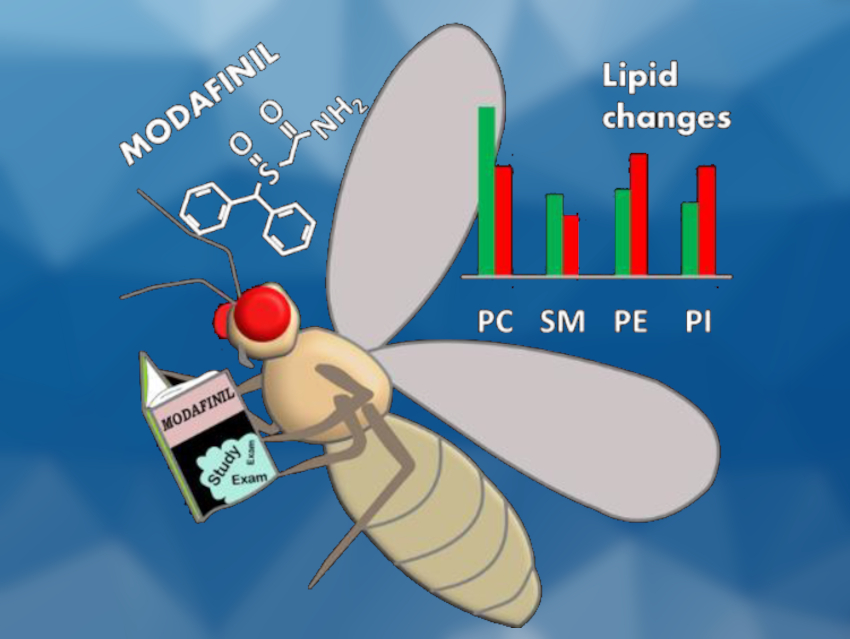Modafinil is a psychoactive drug used for the improvement of wakefulness and cognition in various sleep disorders and neurodegenerative diseases. Currently, there is a rise in the use of modafinil by healthy individuals who need to boost their focus and attention, such as students in exam season. However, modafinil’s mechanism of action is complex and not fully understood.
Andrew G. Ewing and colleagues, University of Gothenburg, Sweden, have identified lipid changes in fruit fly brains following modafinil treatment. The fruit fly has a relatively simple nervous system and high physiological similarities to humans, which makes it a useful model to study the biological processes involved in cognitive functions, memory, and learning. Flies were fed with a yeast-based food containing modafinil for three days, and then time-of-flight secondary ion mass spectrometry (ToF-SIMS) imaging was used to identify lipid changes in the brains of the flies.
The researchers found that modafinil induces changes in the concentration and metabolism of brain lipids, such as phosphatidylcholine (PC), sphingomyelin (SM), phosphatidylethanolamine (PE), or phosphatidylinositol (PI). Modafinil decreases PC and SM levels, while it enhances the abundance of PE and PI species. This might be associated with modafinil’s cognition enhancement. The results suggest that lipid-modifying therapies could be chemical targets for treating cognitive decline associated with disease.
- Mass Spectrometry Imaging Shows Modafinil, A Student Study Drug, Changes the Lipid Composition of the Fly Brain,
Mai H. Philipsen, Elias Ranjbari, Chaoyi Gu, Andrew G. Ewing,
Angew. Chem. Int. Ed. 2021.
https://doi.org/10.1002/anie.202105004




